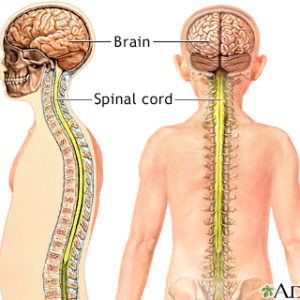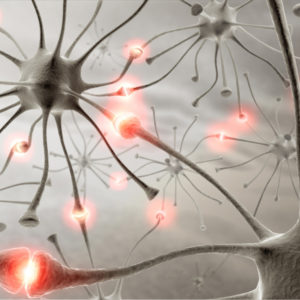Is A “Pinched” Nerve Making Your Life Miserable?
Being “pinched” hurts, but to pinch a nerve? Ugh! That must feel like a severe, sharp, intense pain—and it often does. “Pinched” nerves could happen nearly anywhere and affect nerves that go to your arms, fingers, wrists, neck, head, back, shoulders, legs, muscles and internal organs. “Pinched” nerves can affect your health, posture, vitality, resistance to disease, even your emotional health. “Pinched” nerves can make your life miserable.
“Pinched?”
Do nerves really get “pinched”? Actual pinching is quite rare. What is much more common is what chiropractors call a subluxation—a distortion in your structural system that stresses your nerves and other tissues. Subluxations cause nerve impingement, nerve irritation, nerve lesions, spinal stress and meningeal tension.1
Even though there may be no actual pinching, people like the word because it’s so descriptive. It can really feel like something is being pinched in there. Some health professionals even use it. People at times enter a chiropractor’s office saying their MD, osteopath, physical therapist, massage therapist or other healer referred them because they had a “pinched” nerve and should see a chiropractor to get it “unpinched.”
Where Do Nerves Go?
Individual nerve fibers are microscopic. Although they may be many inches long they are so thin you need a powerful microscope to see them. Nerve fibers are also found in large bundles called nerves, which you can see. Billions of nerve fibers are bundled inside your spinal cord, an extension of your brain, which passes through your spinal column. Nerves branch off from your spinal cord through openings between the vertebrae to connect to every nook and cranny in your body.
Life Without Nerves
Your nerves connect you to the world. Without them you couldn’t see, hear, touch, taste or smell; without nerves you could not feel heat, cold, pleasure or pain. Your body would be the ultimate sensory deprivation tank; no messages could come in—and no messages could go out; without nerves no muscles could move; you’d be a prisoner within yourself; you’d live in complete isolation.
 Nerves Keep You Alive & Healthy
Nerves Keep You Alive & Healthy
Nerve messages also help regulate your body activities such as breathing, heartbeat, digestion, hormone function and elimination. Your immune system needs your nerves so that you can respond to germs, changes in temperature and all kinds of stress. In addition to nerve impulses, nutrients flow over your nerves to nourish your muscles and tissues. If this flow is blocked your muscles may start to waste away.
It’s not hard to understand that if your nerves are not functioning properly, if they are “pinched,” “impinged” or otherwise interfered with, the flow of messages and nutrients over them can be disrupted and your body can become “dis-eased” or weakened. When you are dis-eased you have less energy and vitality and are less able to deal with physical and emotional stress.
Conditions that have been related to “impinged” or subluxated nerves include lowered resistance to disease; infection; colds; flu; allergies; ulcers; constipation; diarrhea; asthma; fevers; headaches; seizures; bed-wetting;
hearing difficulties; balance and visual disturbances and many other conditions.2-4
How Do Nerves Get Impinged Or “Pinched”?
If your structural system is misaligned or distorted it may “pinch,” impinge, irritate, compress or stretch the nerves it is supposed to protect.5-9 This in turn can affect other structures in the area including blood vessels, discs, ligaments, joints, muscles, fascia, tendons and meninges.10 As mentioned earlier, this is referred to as a subluxation.
What Can Cause Subluxations?
Nearly any kind of stress can cause a subluxation: a fall or an accident, even a very mild one that happened years ago; a bad sleeping position; poor posture; fatigue; dental work; a difficult birth; emotional stress; poor nutrition or a combination of stresses.
A subluxation need not happen all at once. It could “set” in your body over time—coming on so gradually that you won’t be aware you have one.
Most “Pinched” Nerves Don’t Hurt
Most people with “pinched” nerves are not in pain since most nerves do not carry pain messages!
Chiropractors sometimes say that people with painful “pinched” nerves might be considered lucky—they know they have a problem and they (hopefully) will go to a chiropractor. But what of those not “lucky” enough to have painful “pinched” nerves? They may suffer and their health may deteriorate for years without the faintest idea that the problem may be coming from their structural system. These people desperately need to see a chiropractor but because they don’t have spine or nerve pain they may never receive the care they need.
This is the big job facing chiropractors today—educating people about subluxations and the need for periodic chiropractic checkups.

BFWRDJ Pretty happy woman smiling
Correct Your “Pinched” Nerves
“Pinched” nerves do not go away by themselves. No amount of painkillers or muscle relaxants can fix them.
Only doctors of chiropractic are able to analyze your body for “pinched” nerves and use chiropractic adjustment techniques to gently realign your body, release your internal stress and free you from your “pinched” nerves.
Only a chiropractic analysis and adjustment can relieve your body of subluxations—nothing else will do.11-13
For more information, call Performance Chiropractic at (661) 942-5000.
References
- Rome PL. Usage of chiropractic terminology in the literature: 296 ways to say “subluxation”: complex issues of the vertebral subluxation. Chiropractic Technique. 1996;8(2):49-60.
- Fedorchuk C, Cohen A. Resolution of chronic otitis media, neck pain, headaches & sinus infection in a child following an increase in cervical curvature & reduction of vertebral subluxation. Journal of Pediatric, Maternal & Family Health – Chiropractic. 2009;2:1-8.
- Alcantara J, Stern G, Oman RE. Female infertility, subluxation & chiropractic care: a case series and selective review of the literature. Journal of Pediatric, Maternal & Family Health – Chiropractic. 2009;2:1-10.
- Alcantara J, Davis A, Oman RE. The effects of chiropractic on a child with transient motor tics using Gonstead & Toggle techniques. Journal of Pediatric & Maternal Health – Chiropractic. 2009;2:1-9.
- Kent C. Models of vertebral subluxation: a review. JVSR. 1996;1(1):11-17.
- Kent C. A three-dimensional model of vertebral subluxation. Chiropractic Journal. 1998;12(9):38,50.
- Budgell BS. Reflex effects of subluxation: the autonomic nervous system. JMPT. 2000;23(2):104–106.
- Maigne R. Orthopaedic Medicine: A New Approach to Vertebral Manipulations. (W.T. Liberson, Ed. and trans.). Springfield, IL: Charles C. Thomas, 1972:40.
- Hadley LA. Intervertebral joint subluxation, bony impingement and foramen encroachment with nerve root changes. American Journal of Roentgenology and Radium Therapy. 1951;65(3):377-402.
- Ibid.
- Hubka M. Another critical look at the subluxation hypothesis. Chiropractic Technique. 1990;2(1):27-30.
- Lantz C. The vertebral subluxation complex, part 2: The neuropathological and myopathological components. Chiropractic Research Journal. 1990;1(4):19-38.
- Koren T. Chiropractic. Science and Medicine. 1999;6(5):42-45.